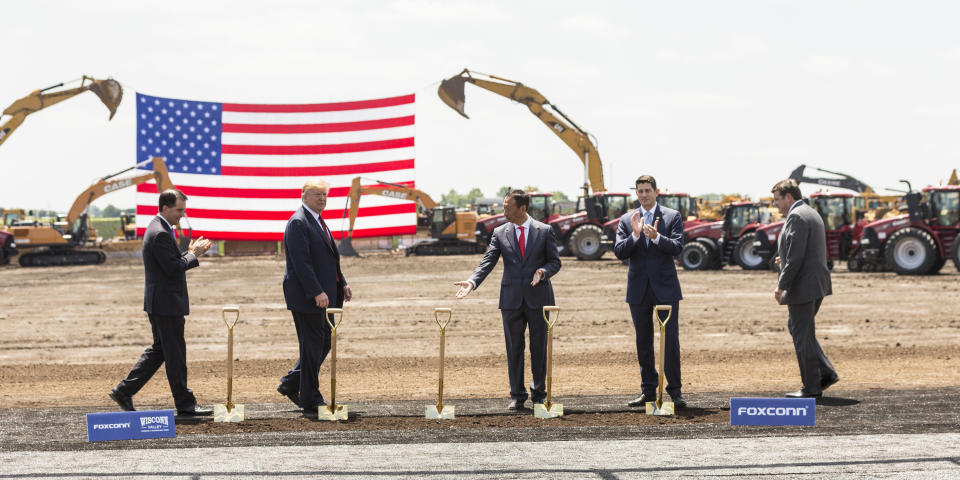Why Biden won’t unite a deeply divided nation
Joe Biden won the presidency in 2020, but there was no mandate for radical change and no widespread repudiation of President Trump. Biden edged Trump in both the popular and electoral vote, yet more than 72 million Americans still voted for a president who lied constantly during his first term, backed white supremacists, fumbled the coronavirus crisis and abused his power in a way that led to impeachment.
Biden backers remain incredulous at the level of Trump’s support. But it’s not really about Trump. It’s about the same economic stress that has riven the middle class for at least two decades and is likely to get worse, not better. Downward pressure on living standards in many parts of the country will continued to fuel the class resentments that animate Trumpworld and will probably persist long after Trump leaves public life.
Trumpism as we know it now grew out of the Tea Party movement that emerged in 2009, amid the economic carnage of the Great Recession. Tea partiers protested government bailouts meant to help people and businesses, on the grounds that hard-working taxpayers would end up funding aid for less-diligent supplicants. That was always flawed logic, but behind it was rising populist anger about the difficulty working- and middle-class families have getting ahead.
Median household income, adjusted for inflation, began to fall as the recession intensified in 2008, and didn’t return to prior levels until 2017, according to Sentier Research. That was nearly a decade of reduced purchasing power for the typical family—during a time when the cost of college and health care were rising faster than overall inflation. Incomes improved from 2017 to 2020, as the labor market tightened. But the coronavirus shutdowns have now thrown 10 million people out of work, with the burden falling hardest on lower-income workers.
All the while, income and wealth inequality have been worsening, with the wealthiest Americans controlling the largest portion of the nation’s wealth in at least 70 years. In 2000, the wealthiest 10% of households owned 63% of the nation’s wealth, while the bottom 90% owned 37%, according to Federal Reserve data. By 2020, the top 10%’s share had risen to 69%, with the bottom 90% falling to 31% of the nation’s wealth. The bottom half of all U.S. households control just 1.9% of America’s wealth, down from 3.5% 20 years ago.
A take of two economies
Here’s how the distribution of wealth in the United States has changed since 1990. Every group has gained in dollar terms, because of inflation and economic growth. But the disparities in that growth are stunning. The wealth of the top 1% has grown 594% during that time, while the wealth of the bottom 50% has grown by just 77%.
America has essentially become two economies: One prospering through global trade, the digital revolution and a booming service sector, and the other struggling to tread water as traditional manufacturing industries shrink or disappear and small towns lose population. Wealth is booming for participants in the global, digital economy, while it’s stagnating or declining in the remnants of the 20th-century economy.
People in each group have sorted themselves by political party. Analysis by the Brookings Institution shows that in this year’s election, Democrat Joe Biden won counties that account for 70% of the country’s economic output, mostly around urban areas. Trump won counties accounting for just 29% of GDP, most of them in rural areas or small towns. This partisan-economic alignment isn’t perfect or fixed, but diverse populations in cities are mostly Democratic while white populations on the hustings are mostly Republican.
These groups face distinctly different problems with different sets of solutions, which is why “unifying” the nation is so difficult. In Democratic urban areas, racial justice, affordable housing, social services and transportation are priorities. In less populated Republican areas, the main concern is holding onto good-paying jobs. Issues like trade, immigration, “Big Tech” and “socialism” become proxies for what voters worry about most. Trump’s hard-line immigration policies, for instance, appeal to Americans who see jobs disappearing around them and worry about who might undercut them in the job market. But immigrants are prized in ethnically diverse cities.

Middle class priorities?
Biden campaigned on a center-left agenda aimed squarely at urban and suburban voters. Some of his policies would benefit middle America, too. On trade, he’ll probably continue Trump’s confrontation with China and push for more made-in-America products. His plan to expand affordable health care would help lower-income voters in a dozen Republican states that haven’t expanded Medicaid to cover more adults, as allowed under the 2010 Affordable Care Act.
But other Biden priorities would bring precisely the type of change anxious Republicans fear. His “transition” to clean power would threaten thousands of oil and gas jobs, for instance. Biden says displaced workers would get new clean-energy jobs paying just as well, but this sounds like the old promises about free trade making everybody better off (except when factories close). A $15 minimum wage might be fine on the coasts, but many Midwest business owners don’t know how they could ever afford to pay it. And wouldn’t Biden’s return to establishment norms bring more neglect of flyover country?
Trump tapped Tea Party anger at government by elites, for elites, and built it into a broader populist movement against a status quo that is failing much of the country. Trump’s methods are illegitimate, since he relied on lies, blame, and bogeymen to unite these alienated Americans in a kind of nihilistic coalition. But the underlying problem is completely real. In the modern economy, too many Americans are falling behind.

No president can fix that in a single term, and Biden will probably face the additional challenge of a Republican Senate happy to block much of his agenda. The best any administration could do is pass bipartisan laws that incrementally improve the quality of education, access to health care, the pace of economic growth and job opportunities in declining areas. Senior politicians of both parties would have to cheerlead this revitalization agenda. Biden will probably speak like a unifier and make far fewer enemies than Trump. But it would be naïve to expect more than that.
Rick Newman is the author of four books, including “Rebounders: How Winners Pivot from Setback to Success.” Follow him on Twitter: @rickjnewman. Confidential tip line: rickjnewman@yahoo.com. Encrypted communication available. Click here to get Rick’s stories by email.
Read more:
Get the latest financial and business news from Yahoo Finance
Follow Yahoo Finance on Twitter, Facebook, Instagram, Flipboard, SmartNews, LinkedIn, YouTube, and reddit.

